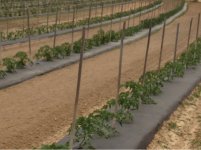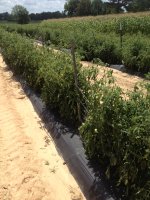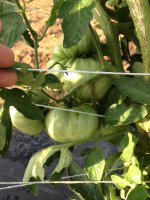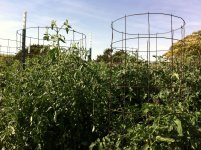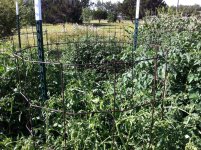TBDonnelly
Veteran Member
- Joined
- Sep 11, 2005
- Messages
- 1,402
- Tractor
- Kioti CK30HST, KL130 FEL, turf tires
I use cattle panels from tractor supply. I count off three squares and then cut from top to bottom. I use 3 of these cut panels to form a triangle to slip over one tomato plant. Then use one 2x2 about 6 foot long to anchor the cage. The panels lay perfectly flat for storage. If my memory serves me right......I get 2 and 2/3rds tomato cage from each 16 foot panel.
Don
I found a picture I posted back in 2007:
http://www.tractorbynet.com/forums/...nmans-jinman-garden-2007-beefsteak-tomato.jpg
Don
I found a picture I posted back in 2007:
http://www.tractorbynet.com/forums/...nmans-jinman-garden-2007-beefsteak-tomato.jpg
Last edited:
